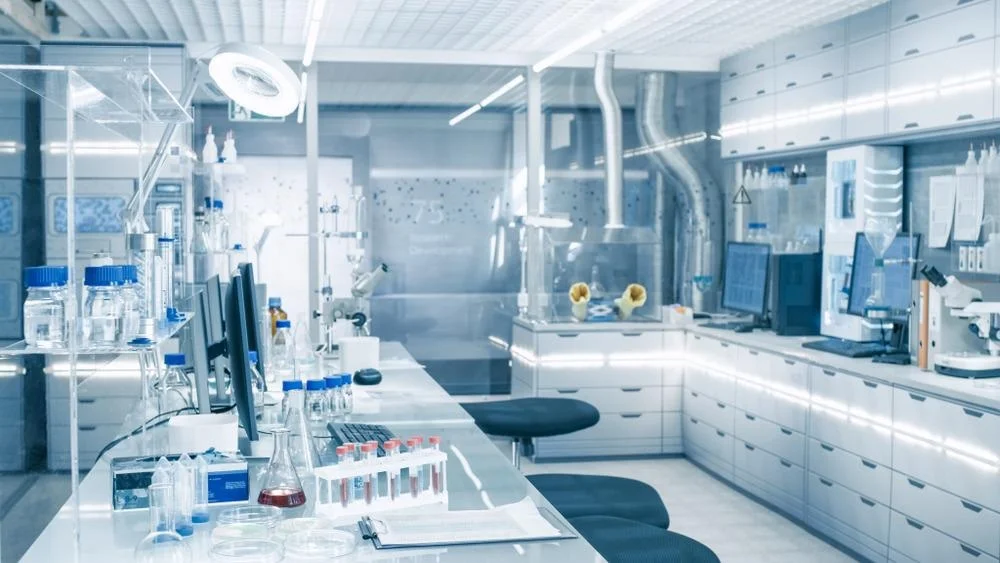DIN 38409 Determination of Organic Carbon in Wastewater
The DIN 38409 method is a standardized procedure designed to determine the organic carbon content in wastewater, which is a critical parameter for assessing water quality and ensuring compliance with environmental regulations. This test is essential for industries that discharge wastewater into public sewers or natural water bodies, as it helps quantify the biodegradable portion of the pollutants.
The process involves oxidizing the organic substances present in the wastewater sample using potassium permanganate (KMnO₄). The reduction of KMnO₄ by the organic compounds is measured, and this value is then used to calculate the amount of carbon present. This method provides a reliable estimate of the biodegradable organic matter, which can impact biological processes such as sewage treatment.
The DIN 38409 procedure ensures consistent results across different laboratories by providing clear instructions on sample preparation, reagent use, and measurement techniques. The standard specifies that the oxidation should be conducted in a closed system to prevent air from interfering with the reaction. This is crucial for accurate results as even small amounts of oxygen can influence the outcome.
Sample preparation plays a significant role in achieving precise test results. Typically, wastewater samples are filtered and diluted according to the standard before undergoing the oxidation process. The dilution ratio should be adjusted based on the expected organic carbon content to ensure that the reaction mixture falls within the linear range of the method. Proper sample handling is also important to avoid contamination from external sources.
For accurate results, it is essential to use high-quality reagents and calibrated equipment. Calibration of the spectrophotometer or other measuring devices used in this process ensures consistent readings over time. Regular quality control checks are recommended to maintain accuracy and reliability.
The DIN 38409 method is widely recognized for its robustness and repeatability, making it a preferred choice among laboratories that need precise measurements of organic carbon content. Its widespread use also contributes to the harmonization of results across different jurisdictions, facilitating better regulatory compliance and more effective environmental management.
In real-world applications, this test is commonly used in industries such as chemical manufacturing, pharmaceuticals, food processing, and wastewater treatment facilities. Understanding the organic carbon content helps these organizations monitor their environmental impact and implement strategies to reduce harmful discharges into aquatic environments.
Understanding the DIN 38409 method also aids R&D engineers in developing new processes that minimize waste generation or enhance biodegradability of products. Compliance officers can use this test to ensure their facilities adhere to local, national, and international environmental standards.
Why It Matters
The determination of organic carbon content using DIN 38409 is crucial for several reasons:
Environmental Compliance: Many regions have strict regulations regarding the discharge of pollutants into water bodies. Monitoring and controlling organic carbon levels helps ensure compliance with these regulations.
Efficient Treatment Processes: Understanding the biodegradable components allows for more efficient use of treatment processes, reducing costs and improving effectiveness.
Risk Management: By identifying high concentrations of organic compounds early on, facilities can take proactive measures to reduce risks associated with potential spills or overflows.
Product Development: In research and development settings, this test provides insights into the environmental impact of new products, guiding decisions towards more sustainable designs.
The results from DIN 38409 testing are vital for quality managers to assess the performance of their facilities. It enables them to make informed decisions about process optimization and resource allocation, ultimately leading to improved operational efficiency and environmental responsibility.
Quality and Reliability Assurance
To ensure that the DIN 38409 test results are reliable and consistent, several quality assurance measures must be implemented:
Training of Personnel: Staff involved in sample preparation and testing should undergo regular training to stay updated on best practices and new methodologies.
Standard Operating Procedures (SOPs): Clear SOPs for each step of the process, from sampling to final analysis, help maintain consistency across all tests.
Internal Audits: Regular internal audits can identify areas where improvements are needed and ensure that all procedures comply with current standards.
In addition to these measures, laboratories should participate in proficiency testing programs organized by reputable bodies. This allows them to benchmark their performance against other institutions and identify any discrepancies early.
International Acceptance and Recognition
DIN 38409 is part of the German standardization system, which has gained significant international recognition due to its rigorous development process. It aligns with ISO standards for quality management systems.
This method is widely accepted in countries that follow European Union (EU) directives on waste water treatment and environmental protection. Its use helps ensure harmonized results across different regions, facilitating easier trade and collaboration between nations.
The standard's robustness and reliability make it a preferred choice for international projects involving multiple jurisdictions. By adhering to this method, laboratories can demonstrate their commitment to high-quality testing practices and contribute to global efforts in environmental conservation.





